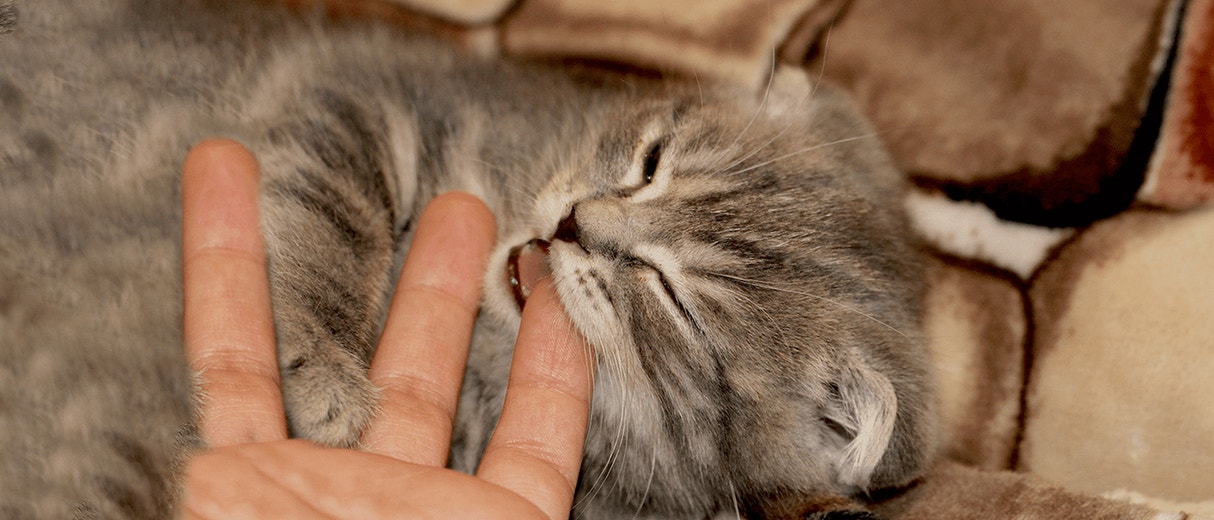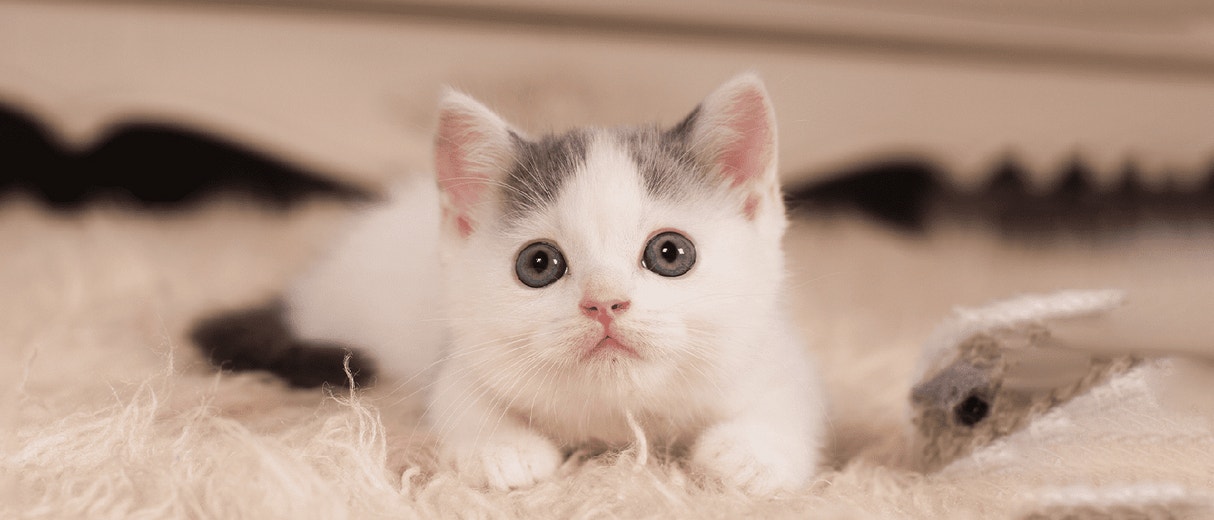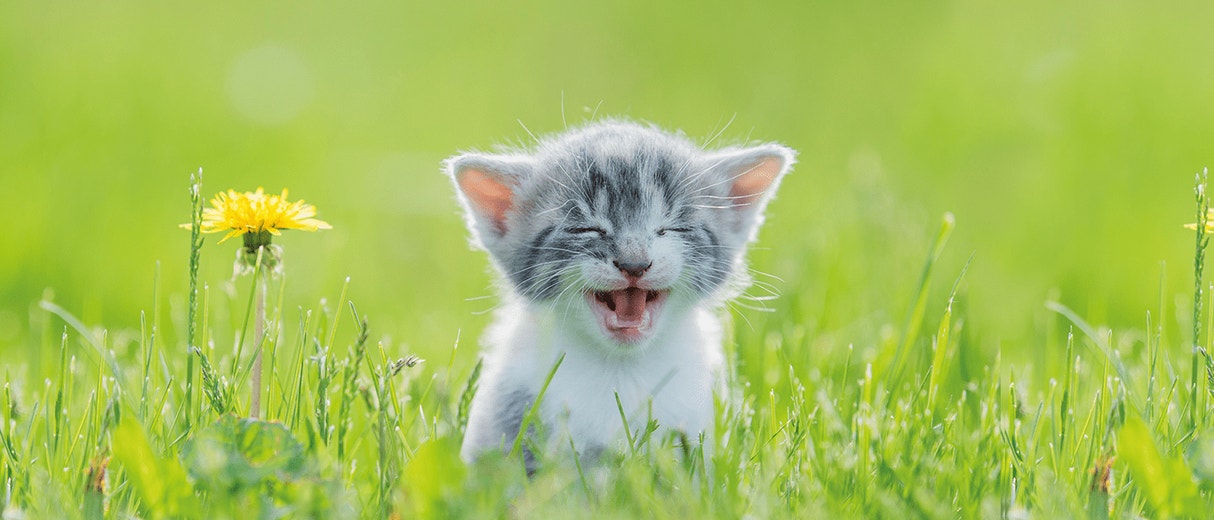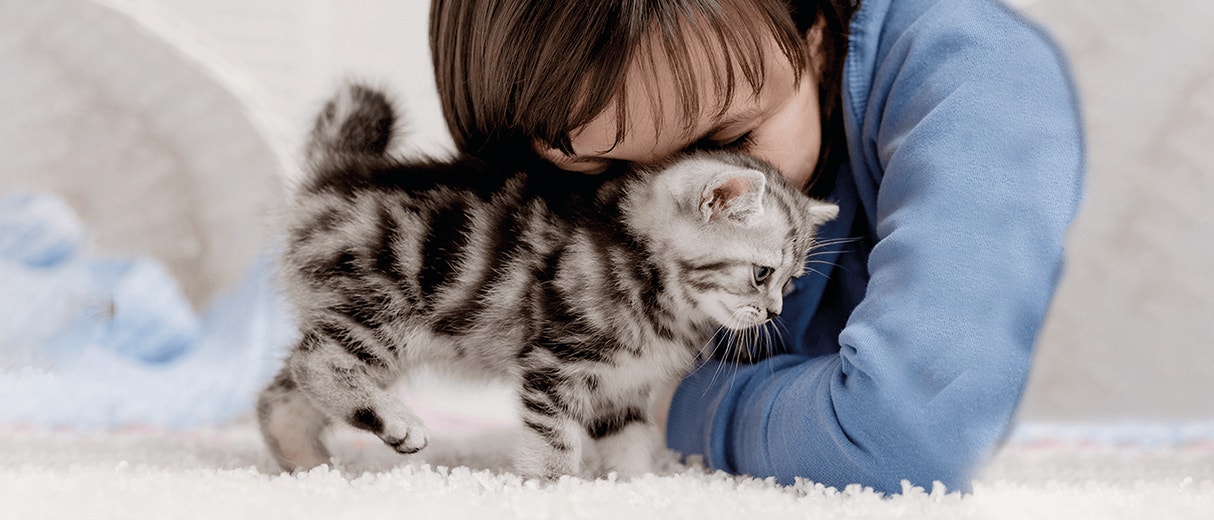
Cat's Tail Signals
Your kitten's busy little tail will tell you lots about how she's feeling. In fact, it's one of her most effective ways to communicate.
Whether you are a new cat-owner or old, it is never too late to try to know your feline friend better, such as how does your cat communicate with you? Yes, cats communicate and they do so mostly with their tail movements. If you are curious, this article is for you.
Much like dogs, cats too "talk" with their tails. And, it's up to you to decode the cat tail language. Look carefully into its tail movements, and you can tell with ease whether they are hungry, sad, or in discomfort. Understanding your pet helps them lead a healthy life.
So, let us decode the cat tail language of your kitty.
Does a cat do different tail movements around humans and other cats?
While cats can communicate vocally by meowing and purring, their tail is the biggest giveaway if you want to predict their mood. The felines use their tail for communicating with both humans and other cats. Usually, the signals are quite the same for both. However, some gestures are exclusively for interacting with humans. Here are some cues to decipher cat tail body language.
The tail-up position.
Cat tail language is pretty easy to decipher if you know how to read the signs. For instance, when the cat has its tail high up, with the tip slightly curved, it means the cat is confident, happy, as well as excited. It is a positive signal. Cats mostly use this gesture exclusively for greeting humans, which means the kitty is in a friendly mood and ready to be pet by the humans.
The curved-tail position.
When your cat intertwines the tail around your legs, it means they have a good bonding with you. Cats use a similar signal to communicate with other cats they have bonded. The eyes and whiskers can help read the cat tail signals. If it is pointing towards you, they are in an interactive mood.
The question mark position.
If the end of your cat's tail has a question mark shape, then you are in luck! Your pet is in a positive state. It means your cat is happy to see you. It may also mean they are curious or wary and wondering. If they are in a playful mood, they are likely to respond in affirmative if you interact with them during this period.
The tucked-away position.
When the cat tucks its tail underneath the body or the side, it means fear or submission. It can also mean the cat is experiencing some form of pain or illness. It helps in detecting any disease they might have at an early stage.
The tail is in a puffed-up position.
Sometimes, cats can be aggressive and this is usually because of cat stress. One way of knowing whether your feline baby is in an aggressive mood is from the cat tail signals. Or, to be precise, when the tail is in a puffed-up position. In this position, they are angry or agitated. Cats do this to appear bigger, to ward off probable enemies. If provoked in this stage, they are more prone to attacking you. So, you must be very careful when you see a cat’s tail in this position.
The tail is straight in the air.
When the cat holds its tail straight-up, it is indicative of a positive mood. Want to play with your kitty? Now is the time to approach your pet. Kittens often show this gesture when meeting their mothers. Your pet cat conveys their mood for receiving love through this body language of a tailed cat. This gesture means your cat is familiar with your presence and might even be missing you!
Tail swishing.
If your cat is swishing its tail from side to side, it may be tricky to decode the cat tail signals. If it is straight and moving at a careful and measured pace, it means the cat is ready to hunt. Cats are predatory by nature. It is natural for them to hunt for small prey like mice. However, in a home environment, it means your cat is focusing on something. Perhaps they spotted an insect or a toy?
Tail wrapped around its body.
When the cat wraps its tail around its own body, it indicates a threat. It usually occurs with the cat crouching down on its legs and enveloping its tail tightly around its body. Additionally, if the cat is hissing and you observe a dilation of its pupils - time to move away. This is one of the reasons you should know cat tail signals. By knowing your furry friend’s different moods, you can approach your kitty accordingly.
Tail-thumping.
When the cat is a bit more ferociously thumping its tail on the ground, it again means agitation. To decipher the cat tail movement meaning, observe the frequency and strength of its movement. The faster it does, the more is the degree of agitation. If provoked any further, they will bring out their claws and fangs. Under these conditions, it is better to leave the cat on its own and not approach it.
The tail of the cat lies horizontally on the ground.
The easiest way to know the cat tail movement meaning is through its direction. If you find your cat resting on the ground, its tail lying horizontally - the cat is relaxing. Under this situation, it is better to let it rest. If you wish, you can pet them gently.
The cat waves the tail when lying.
To know the cat tail position meaning, see if the cat is slowly waving the tail when lying on the floor. It means it is in pain. It is better to take it to the vet immediately.
If you keep the above points in mind, you will find it easy to read the language of the cat's tail. All the above pointers will help you deduce the language of the cat from the tail, which, in turn, will improve the communication between you and your kitty.
Frequently Asked Questions:
-
Why does my cat knead blankets?
Wondering why do cats knead blankets? They knead blanket as a habit from their kittenhood when they kneaded their mother’s belly while nursing. It is a sign of contentment and relaxation. They also do it for nesting, i.e., preparing a place to sleep in just like humans fluff up their pillows.
What is Cat making biscuits?
Cat making biscuits is when cats ‘knead’ on soft objects like a blanket or on their human’s lap to show contentment, love and affection. They push one paw after another rhythmically, which resembles kneading dough and hence the behaviour is known as cat making biscuits.
Is cat kneading a sign of affection?
While it might not be the most comfortable way for you but your cat is showing you love and affection by kneading on you. Also known as cat making biscuits since they way it resembles kneading dough, cats knead only when they are content and relaxed.
What do cat tail flicks mean?
To know the language of the cat from the tail, observe the frequency of the flick or the cat tail positions. A rigid back and forth means the cat is focusing on something, most likely on prey. Flicking and thumping the tail indicates a high level of stress and agitation. An upright tail means your fur baby is asking for some love.
Why does my cat hit me with her tail?
Sometimes it is difficult to know the language of the tailed cat. It can be a gesture of fondness, or excitement. It can also mean slight frustration. But mostly it is a positive sign.
Why does my cat's tail move when I pet her?
If you are petting your cat, and in return, they move their tail slightly, it means they are feeling secure. Your cat feels safe in your presence, and if you wish, you may continue with your petting. In this way, you will know the cat language through the tail.
Do cats wag their tails like dogs when they are happy?
Dogs generally wag their tails when they are happy, satisfied, or excited. However, for cats, the same does not apply. The trick to knowing is a thorough observation of its movement. The cat can thump its tail, swish it, etc., and each has a different message.
What stresses out a cat?
Some of the most common causes of stress in cats are:
Change in routines
Home relocation
New member in the family
Loud noises
Vet visits
Getting bullied by other animalsDo cats purr when they are stressed?
Indeed, they do, since purring is not just a way of communicating contentment, affection, and happiness, but it is also a self-soothing technique. So yes, a stressed kitten might also purr.
Does petting a cat relieve stress?
While petting a cat will relieve your stress, the same cannot be said for your furry baby. Of course, if your fur kid wants to curl up to you when stressed, give her all the cuddles, but usually, a stressed cat would like to be left alone and hide in a safe place when stressed.
What can I give my cat to reduce stress?
You can use stress relief products such as calming collars, pheromone diffusers, and thundershirts to calm your fur baby. Or you can also offer calming cat food and treats and use play as a distraction. If nothing works and the signs of stress in cats continues for long, take your furry to see a vet.
Why does my cat rub against my legs when I walk?
If you are wondering why do cats rub against your legs, this article aims at explaining this behaviour. It is common for cats to rub against the legs of loved ones. Though it mostly signifies love and affection, it is a complex social interaction for cats. By rubbing against the legs of their favourite humans, cats leave scent signals to claim possession and belongingness, as well as for greetings and identification. Therefore, the next time you wonder why the cat rubbing head on me, remember to shower it with all the love and affection.
Can cats be trained not to scratch furniture?
Cat clawing is one of the natural urges in cats, which not just helps in marking territory or sharpening claws, but for relieves stress and feeling good. If trained from a young age, cats can get accustomed to not scratching furniture.
Why is my cat scratching the furniture?
One of the primary reasons behind a cat scratching the furniture is to maintain and sharpen their claws. However, in addition, cats scratch furniture to condition paw muscles, relieve stress, stretch, as well as to mark territories and leave scent signals. Scent signals, combined with claw husks and scratches are strong visual cues for other cats.
How can I get my cat to stop scratching the couch?
If you want to avoid your cat clawing the couch, you can purchase a scratching post for them to use instead. Using a citrus spray is also effective as a cat repellent to keep them off furniture. In addition, you can also trim their claws to make sure they stop scratching couches. However, if your cat ventures outdoors, it is better to use homemade cat repellent sprays than to have them declawed.
Why is my kitten meowing at night?
Most cats are nocturnal in nature, meaning they are more active at night. Though most domestic cats grow acquainted with the timing followed by their owners, some cats show natural tendencies of being more active during the night. Kitten meowing is a common practice for cats of all ages. However, if your kitten meowing is particularly at night, it might mean your little furball is feeling bored, and wants to go out. Similarly, if your kitten keeps meowing at night, it might be distressed for some reason.
Why do kittens chirrup?
Chirrups, or chirping sounds are commonly made by cats and kittens alike. Mother cats often use chirping sounds or trills to gesture their kittens to follow her. By imitating the chirping kitten sound, your kitten might want you to accompany or follow it.
Why is my kitten making weird noises?
If your kitten keeps meowing or making weird kitten sounds like yowls for longer periods of time, it is usually indicative that your kitten is upset with something, or is experiencing distress and anxiety. You can help your kitten to calm down by gently holding it, stroking its head and under the chin, as well as by providing it with its favourite treats and toys.
What do different kitten noises mean?
Kittens are social creatures which often use kitten sounds to interact with other cats, as well as their owners. Depending on the type of sound produced, its vocalization and tone, kittens can mean several things. Paying close attention to these noises can help you understand your kitten better and interpret what it is trying to communicate.
See More Articles Like This




